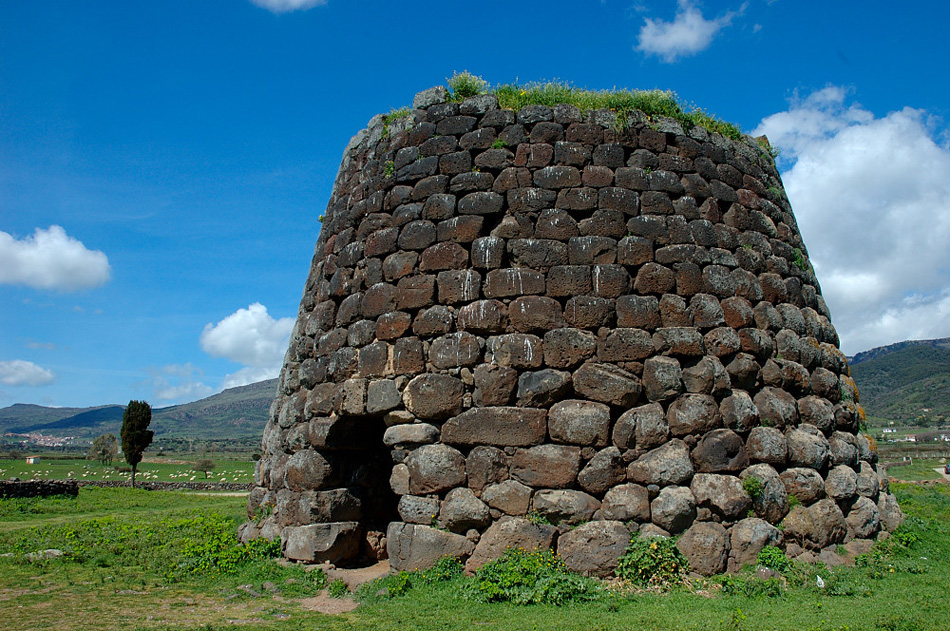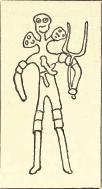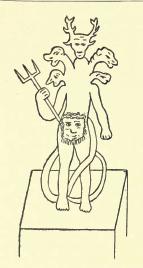Amerindians in Sardinia!?! March 20, 2012
Author: Beach Combing | in : Ancient, Modern , trackbackWhen Beachcombing was a strapping young lad he opened a fuchsia file of claims for pre-Columbian crossings of the Atlantic. The problem was that after two or three years and entries for every people from Basques and Gaels to Zulus he got a tadge bored: most theories lacked anything like sensible proof, then (more seriously) there were so many weird theories kicking about that even the most bizarre became passé. However, he also opened up another file that he remains fond of twenty odd years later: the question of pre-Columbian crossings from the Americas to the Old World. He likes these not because he believes for a second that they happened – though a couple are curiously compelling: including one Roman story visited before in this blog – but because they are at least colourful and a useful kick to euro-centrism. He would very much like to increase this file and so wondered if anyone could volunteer anything: drbeachcombing AT yahoo DOT com. In the meantime, as a taster, here is some pleasing nonsense about Amerindians in Sardinia from the 1880s.
In the works referred to, considerable notice is taken of what are called Sarde Idols [in Sardinia], a number of small metal images, and of certain towers, called Noraghe and the Sepulchres of the Giants. The Noraghe, of which there are said to be as many as 3000, are ‘towers, in the form of a truncated cone, from 30 to 60 feet in height and from 100 to 300 feet in circumference, at the base. They are built upon natural or artificial mounds and are enclosed by a low wall. The ascent is from the interior, and it is supposed that they must originally have had a platform on the top.’
So we have the Noraghe (more commonly Nuraghe – pictured above) a settlement type exclusively found in Sardinia. Islands often have exclusive types of architecture, but watch our author effortlessly slip in a Mexican reference here.
[Quoting a mythical text] ‘Norax, a son of Mercury and Erythsea, who led a colony of Iberians into Sardinia.’ Now, Norax is a son of Mercury. It has been amply shown in the foregoing pages, that Mercury is the Quetzalcoatl of Mexico. He, by crossing the Atlantic into Western Europe, becomes the God of Gaul. As Erythaea, the mother, is an Island between Gades and Spain, it follows, that this son of Mercury must have landed at the gate of the Gods and become an Iberian. He it is that passes into Sardinia and builds the towers.
In another myth, already given, Sardus the son of Hercules gives name to Sardinia. Now, Hercules is the constellation overhanging the lands of the red men in North America. It is in those lands, that the mound cities are found. It follows that Sardinia must have been colonized from the mound cities. There is no actual inconsistency in these myths. They show that the Noraghe were built by races who came from beyond the Atlantic. There is nothing in the myths mentioned that gives the exact spot from which the actual builders came: but that desirable link in the evidence is supplied by what is said of the corresponding towers in the Balearic Islands. It is Atalaya. They are towers of Atalaya, which word by use shortens itself to Talayots. Atalaya is the name of the tower of Quiche in Central America. The reader will remember that Atalaya was the capital of the Empire of Quiche under Balam its sovereign.
And the hysteria goes crashing on.
In an American work by Squier, called the Serpent Emblem, there is a picture of a tower at Tescuco, near the ruins of Quiche, the city now referred to. It differs from the Noraghe of Sardinia, in only one circumstance, and that is, that the ascent is from the outside. In addition to the towers, in the work referred to, by Mr. Tyndale, much is said of the Sarde Idols. ‘Some of these figures have heads of animals, such as Apes, Antelopes, &c. Most of them have tails.’ It is said that similar Idols have not been found in any other country. The figure, now presented, is one of the Sardinian Idols.
If the reader will take the trouble to turn to… a picture of Xemes, the God of Hayti, one of the West Indian Islands, and there identified as Cerberus.
On a comparison of the two images, it is hardly possible to deny, that they are one and the same. Now the constellation of Cerberus overhangs the West Indies, and it follows that the Sarde Idols must have been brought by Hercules or his son Sardus, from Hayti.
While writing this Beachcombing was reflecting on the nature of universe and humanity’s place within it (as you do). Beach reflected that broadly speaking there are three positions. (i) we live in a rational universe and humans, as rational creatures, can understand said universe; (ii) we live in a non-rational universe and humans as rational creatures have problems; and (iii) we live in a rational universe but human reason is inadequate to the task of understanding our universe. This screed might stand as proof of Beach’s favourite proposition, the third.





